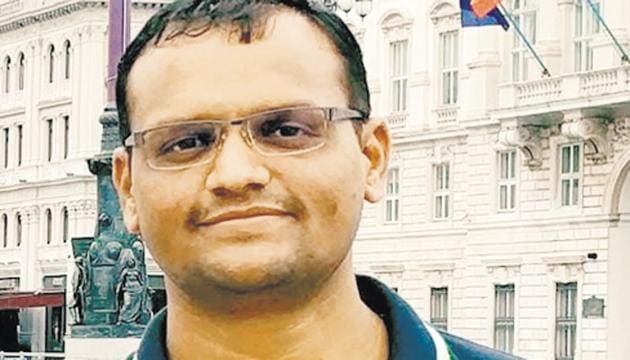Alumni connect: As COEP club activity we used to have night sky party, says Prakash Gaikwad
He has studied at the National Centre for Radio Astrophysics and College of Engineering, Pune. Gaikwad is a scientist who works on cosmology, large scale structure and galaxy formation in the universe.
Prakash Gaikwad is currently pursuing a postdoctoral fellowship at the University of Cambridge, UK. He has studied at the National Centre for Radio Astrophysics and College of Engineering, Pune. Gaikwad is a scientist who works on cosmology, large scale structure and galaxy formation in the universe. He retraces his journey and also talks about his upcoming projects.

Tell us about your educational background.
I studied at KBH Vidyalaya and later at KTHM College, Nashik. I obtained a bachelor’s of technology (B Tech) degree in production engineering from College of Engineering, Pune in 2009. Later, I completed my M Sc and Ph D from National Centre for Radio Astrophysics, Tata Institute of Fundamental research, Pune between 2012 and 2017. Now, I am currently a post-doctoral fellow at University of Cambridge, United Kindom.
How were you in academics?
I was a gold medallist in B Tech. Recently I have been awarded the prestigious Tata Institute of Fundamental research Alumni Association - Geeta Udgaonkar Award for the best PhD thesis in all of TIFR, for the year 20172018.
What drove you to choose this career path?
One word answer is Curiosity. I was mainly inspired by a Marathi book “Akashashi Jadale Nate” written by Professor Jayant Vishnu Narlikar. Later, while pursuing my engineering, I was a part of the COEP astronomy club. As a club activity we used to arrange talks by experts, night sky party and planetarium sessions which enhanced my curiosity further.
What happened after graduation?
I joined John Deere technology center India as an engineer. There, I worked on 3D modelling and design of tools and material handling equipment. The visualisation required helped me improve my imagination and is turning out to be useful in my research career now.
Tell us about your career journey
I resigned from JDTCI in 2011 to pursue my interest in astronomy and astrophysics. My parents supported my decision. I joined the Physics department of SPPU for a post graduate (MSc) degree. However, when I was in first year, I was selected for NCRA-TIFR PhD programme. During my PhD years, our group consisting of professor TR Choudhury from NCRATIFR, Prof R Srianand from IUCAA and Dr V Khaire from University of California , United States, solved the photon underproduction crises by using Hubble Space Telescope data and simulating the conditions of Universe on high performance computers at NCRA-TIFR and IUCAA, Pune.
What about the highs and lows of your career so far?
When I was in 10th standard, I was curious to learn computers. However, I did not have money then. So I used to work in a news paper distribution agency in the morning and attend the computer class in the evening. Today I have access to one of the best super-computing facility in the world.
What are your future plans?
In future, I would like to come back to India and establish a numerical simulation group to plan the scientific goals and address the problems in Astrophysics through observations.






